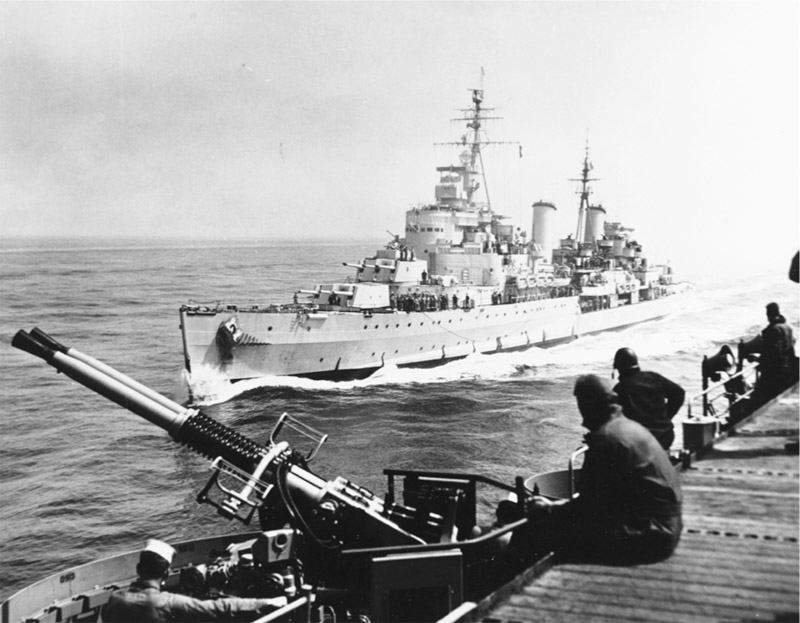
APPENDIX VI
River Thames, London—public view
The keel for HMS Belfast, one of ten Town Class cruisers, was laid in December 1936. She was launched less than two years later, on March 17, 1938. On June 6, 1944, HMS Belfast began shelling the coast at 5:27 a.m., suppressing fire from German coastal guns at La Marefontaine at Ver-sur-Mer. She remained on station until June 16, providing fire support and tending to the wounded before a short replenishment. HMS Belfast continued to bombard targets on the mainland until June 23, when the battle had moved inland, out of the reach of her guns.

NARA 80-G-633833
Hamilton, Ontario, Canada—public view;
pc.gc.ca/en/lhn-nhs/on/haida
This Tribal Class destroyer of the Canadian Navy sailed as part of the 10th Destroyer Flotilla operating out of Plymouth, England, during spring 1944. Her duty was to destroy as many enemy vessels as possible to reduce the risk to the D-Day invasion fleet.
Portsmouth, England—under restoration;
nmrn.org.uk/LCT7074
LCT-7074 is the last of her type in the United Kingdom and a veteran of the D-Day campaign. More than 800 LCTs participated in the D-Day invasion, delivering 10 tanks for the British 7th Armoured Division (“the Desert Rats”). LCT-7074 had gone derelict at Birkenhead, England, and sank at her moorings. In October 2014, she was raised and transported to the naval base at Portsmouth for conservation and eventual restoration.
Beginning with the D-Day assault through the end of the war, LST-325 made forty-three round-trips between England and the Omaha, Utah, Gold, and Juno invasion beaches, as well as the port at Rouen, France. In December 1944, LST-325 rescued more than 700 men from the torpedoed troop transport Empire Javelin.
This LST arrived off Omaha Beach on June 7 and discharged US Army soldiers and vehicles. She then took on casualties and began her first round-trip on June 8. LST-393 made thirty round-trips to the invasion beaches in Normandy during the invasion and subsequent race to Germany.
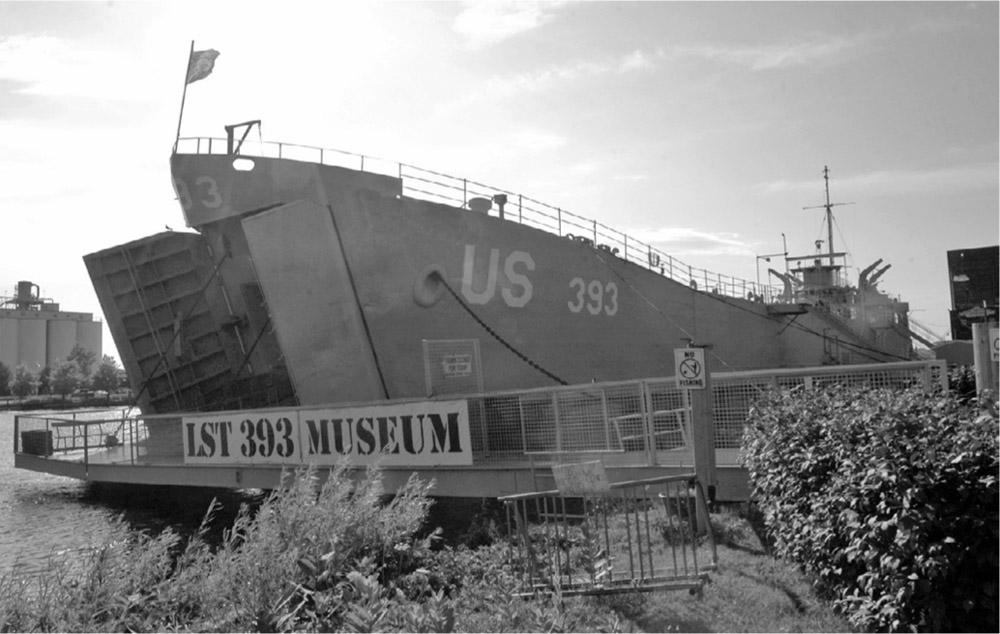
PHOTO BY ARTHUR CASADONTE
The Jeremiah O’Brien is the last unaltered Liberty ship. She supported the D-Day invasion, making eleven round-trips between Normandy and England. The ship returned to Normandy on the fiftieth anniversary of the D-Day invasion in 1994.
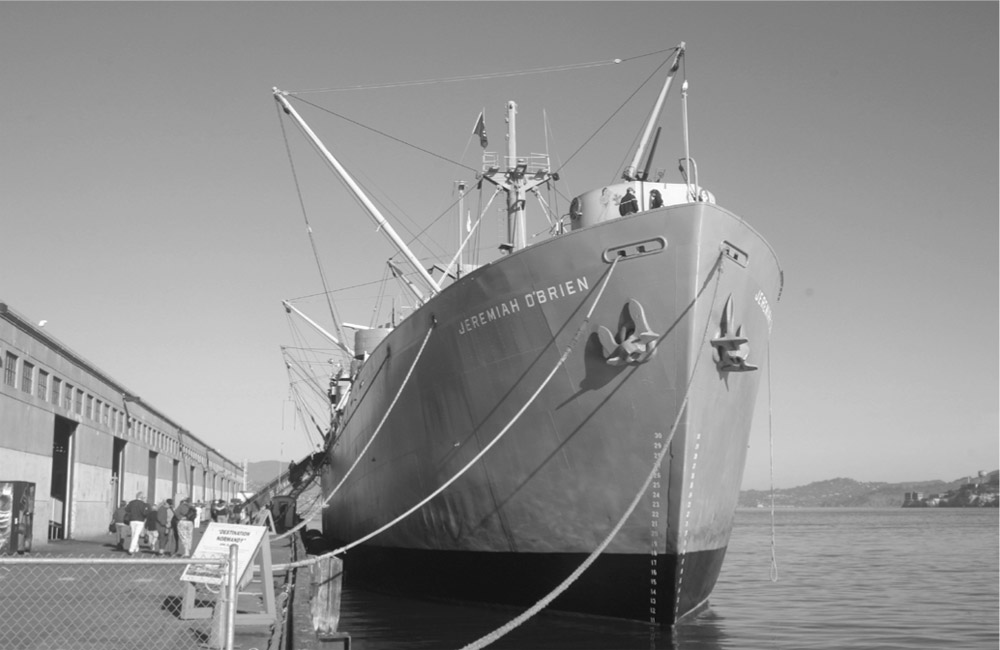
PHOTO BY NICHOLAS A. VERONICO
Destroyer Laffey arrived off Utah Beach at dawn on D-Day to screen the invasion ships and bombard coastal defense guns. One June 12, Laffey engaged with German E-boats.
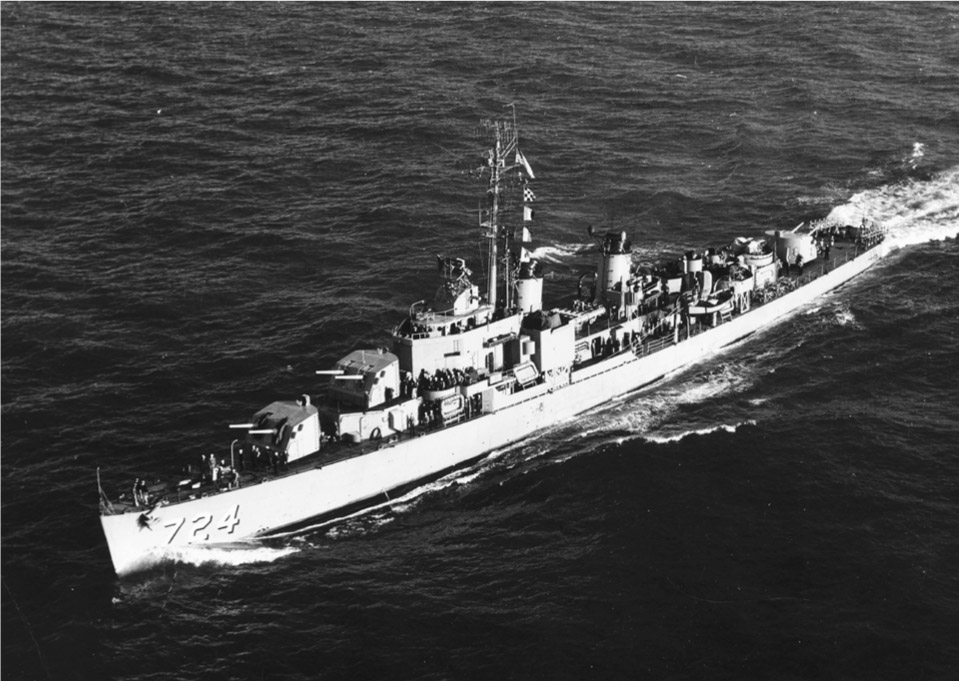
tpwd.texas.gov/state-parks/battleship-texas/park_history
The battleship Texas provided gunfire support to troops going ashore on D-Day. During the ensuing days, Texas was struck by two German coast artillery shells. The first killed one sailor and injured a dozen more; the second shell failed to explode.
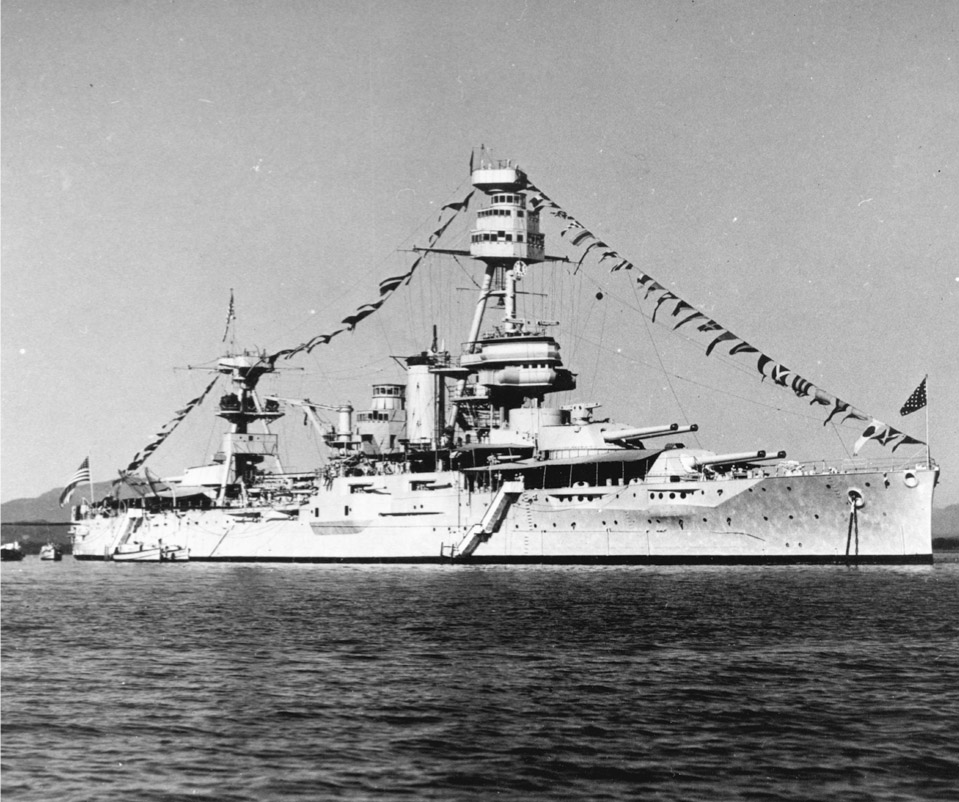
NAVAL HISTORICAL CENTER NH 107015
Private owner • Flyable
Flew as a glider tug with the 75th Troop Carrier Squadron, 435th Troop Carrier Group on D-Day.
Tunison Foundation Inc. • Flyable
This aircraft flew with the 74th Troop Carrier Squadron as part of the Chicago mission, towing CG-4A Waco gliders carrying members of the 101st Airborne Division.
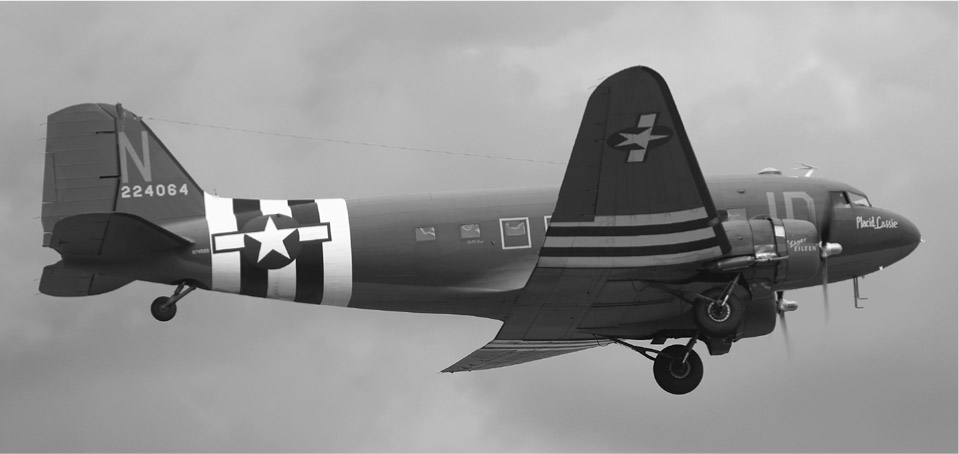
PHOTO BY PARR YONEMOTO
Air Mobility Command Museum, Dover, Delaware • Preserved, on public view
This Skytrain flew with the 61st Troop Carrier Squadron on D-Day, dropping paratroopers from the 82nd Airborne Division near Sainte-Mère-Église.
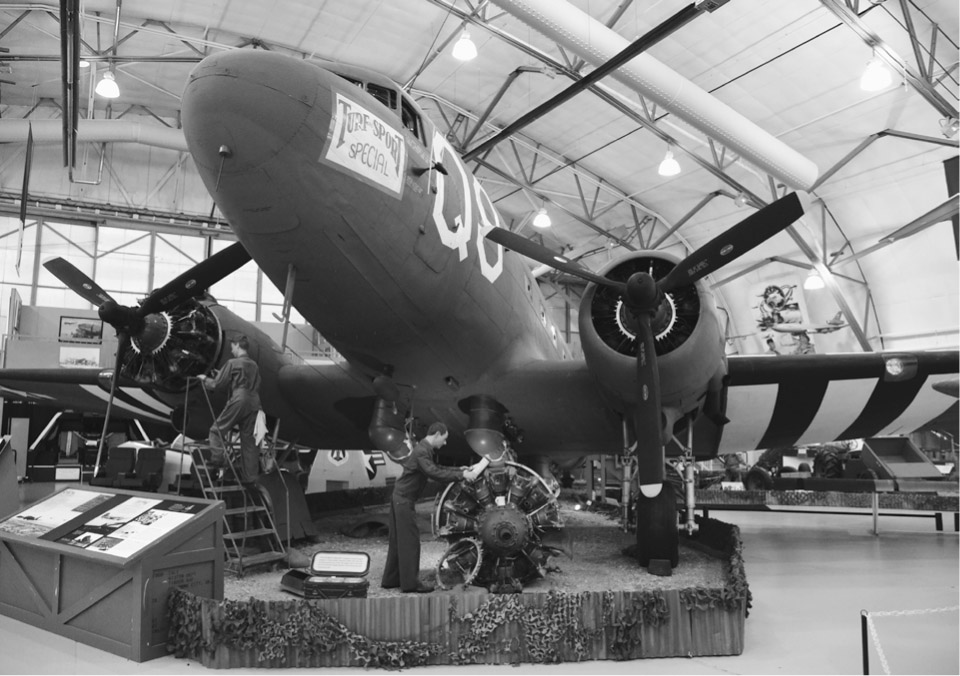
PHOTO BY IAN E. ABBOTT
Commemorative Air Force • Flyable
C-47A 42-92847, That’s All, Brother was the lead ship of the Normandy aerial invasion that saw more than 800 other Skytrains drop over 13,000 Allied paratroopers behind enemy lines. That’s All, Brother went on to support Operations Market Garden (Eindhoven and Nijmegen, the Netherlands), Repulse (supplying troops at Bastogne), and Varsity (crossing the Rhine River) before being sold as surplus at the end of the war. This Skytrain was slated to be scrapped before being rescued by the Commemorative Air Force.
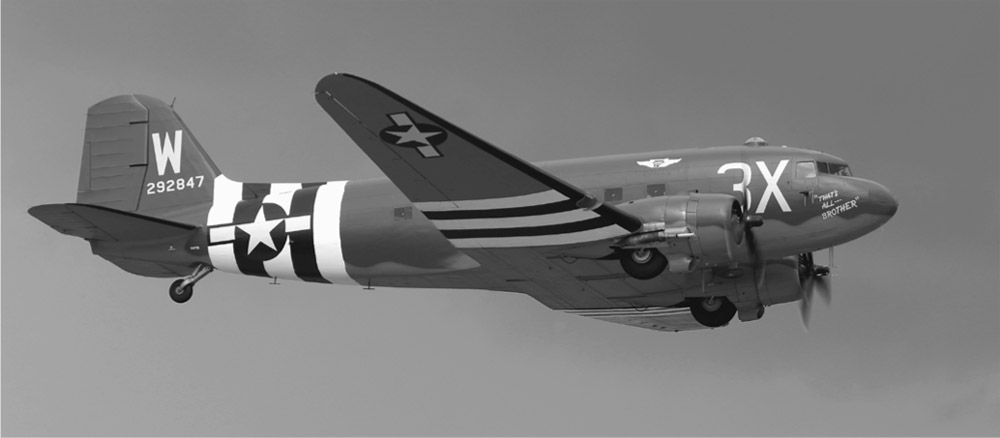
PHOTO BY PARR YONEMOTO
National World War II Museum, New Orleans, Louisiana • Preserved, on public view
nationalww2museum.org
This aircraft dropped pathfinders of the 2nd Battalion, 508th Parachute Infantry Regiment, 82nd Airborne Division, on D-Day.
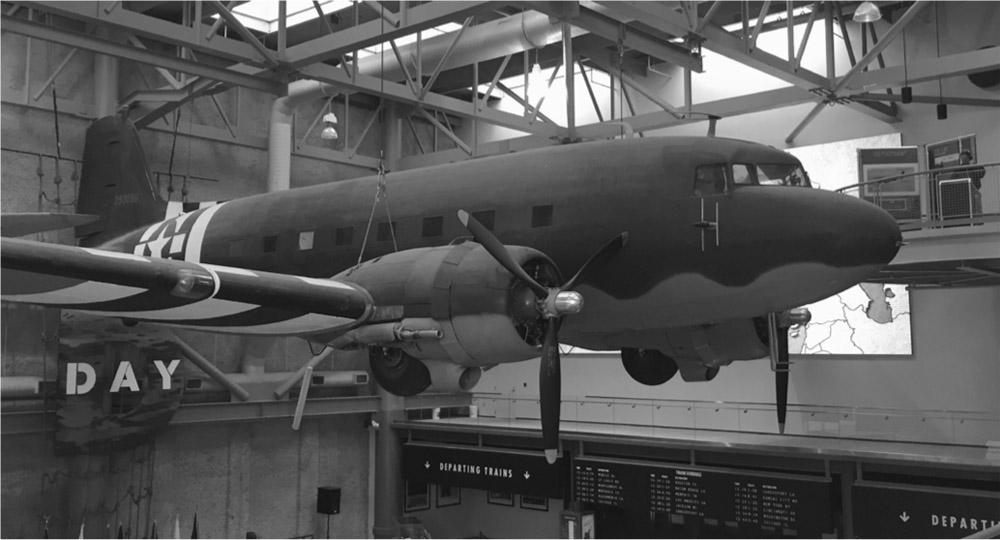
PHOTO BY NICHOLAS A. VERONICO
Private owner • Under restoration
Night Fright flew with the 436th Troop Carrier Group.
Valiant Air Command, Titusville, Florida • Flyable
valiantaircommand.com
Dropped members of the 82nd Airborne Division near Sainte-Mère-Église on D-Day.
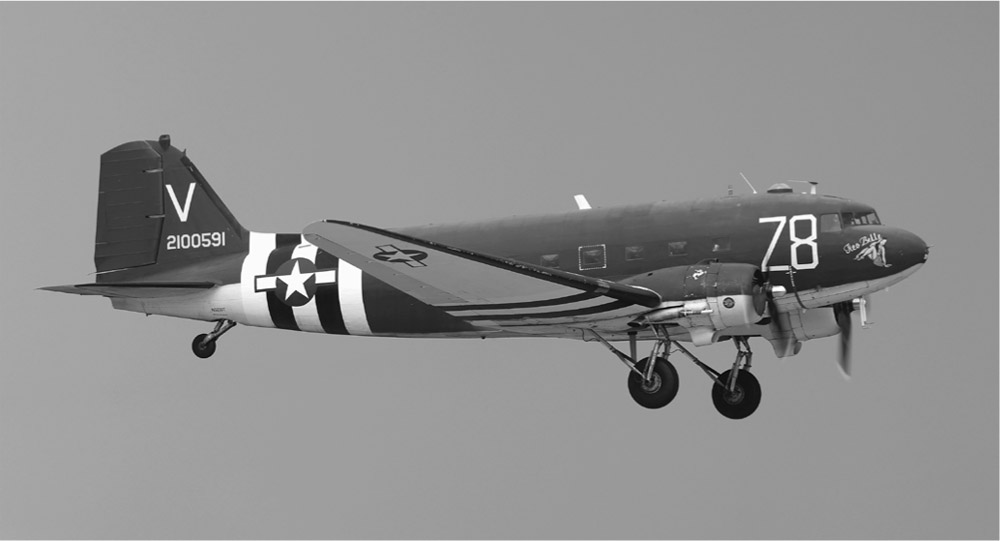
PHOTO BY PARR YONEMOTO
Airborne Museum, Sainte-Mère-Église, France • Preserved, on public view
Private owner • Flyable
Flew two missions on D-Day, the first dropping paratroopers from the 82nd Airborne Division near Sainte-Mère-Église.
Dutch Dakota Association/DDA Classic Airliners, the Netherlands
dutchdakota.nl
This aircraft flew with the 316th Troop Carrier Group’s 44th Troop Carrier Squadron on D-Day, dropping paratroopers of the 515th Parachute Infantry Regiment near Sainte-Mère-Église.
Association Merville-Dakota, France • Preserved, on public view
the-snafu-special.com
On D-Day, The SNAFU Special dropped members of the 501st Parachute Infantry Regiment, 101st Airborne Division, south of Sainte-Mère-Église and then continued to support the troops throughout the battle.
National Warplane Museum, Geneseo, New York • Flyable
nationalwarplanemuseum.com
Flew with the 316th Troop Carrier Group, dropping the 82nd Airborne Division near Sainte-Mère-Église on D-Day.
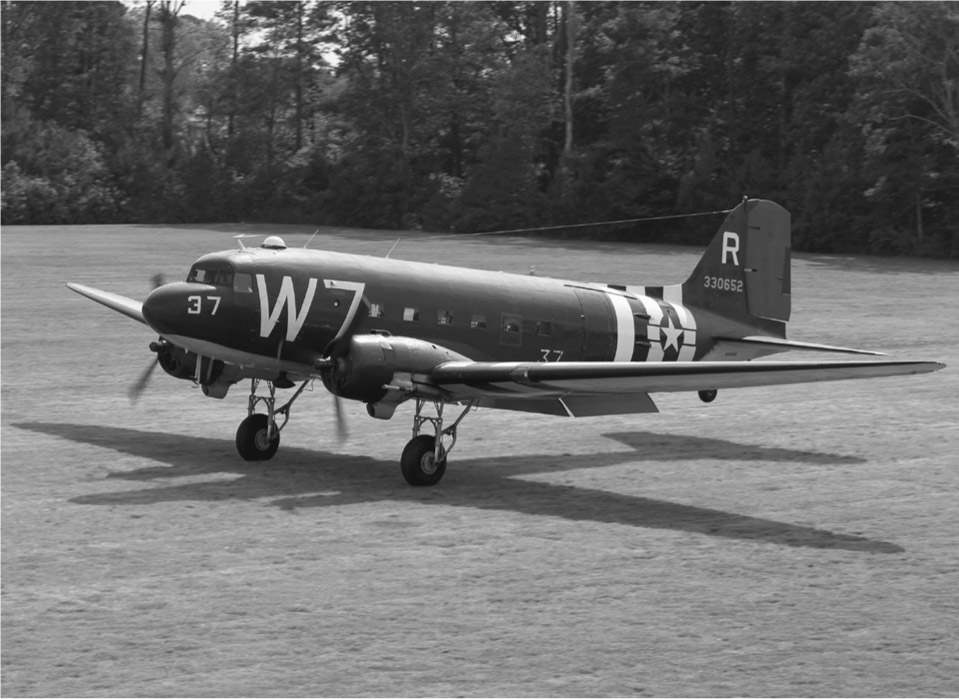
PHOTO BY PARR YONEMOTO
Private owner • Under restoration
Flew with the 62nd Troop Carrier Squadron on D-Day, dropping members of the 2nd Battalion, 508th PIR, 82nd Airborne Division, near Sainte-Mère-Église.
B-26B-25-MA 41-31773, Flak-Bait
National Air and Space Museum • Under restoration
airandspace.si.edu/collection-objects/martin-b-26b-25-ma-marauder-flak-bait
This medium bomber flew two missions in support of the D-Day landings on June 6, 1944. The Marauder’s forward fuselage has been displayed at the Smithsonian Institution’s National Air and Space Museum on the Washington Mall, Washington, DC, since its opening to the public for America’s Bicentennial in July 1976. In 2014 Flak-Bait was moved to the National Air and Space Museum’s Udvar-Hazy Center in Chantilly, Virginia, where it is on public display.
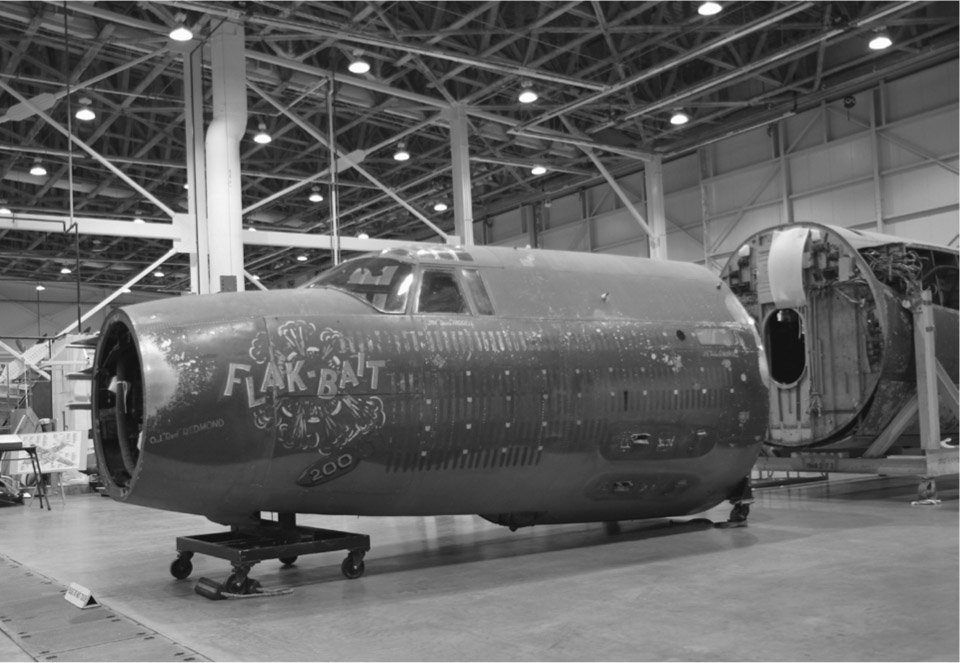
PHOTO BY KEVIN GRANTHAM
Private owner • Flyable
ml407.co.uk
Flown by Flying Officer John “Johnnie” Houlton, DFC, of No. 485 Squadron (Royal New Zealand Air Force) and credited with the first aerial victory of D-Day, a Junkers Ju 88.
Battle of Britain Memorial Flight • Flyable
raf.mod.uk/display-teams/battle-of-britain-memorial-flight
This Mk IXe Spitfire flew patrols with No. 443 Squadron (Royal Canadian Air Force) during the invasion and on June 13, 1944, lost a wheel on takeoff. Flying Officer Gordon Monroe completed that mission but landed the plane gear-up upon his return. Both the aircraft and pilot returned to service, with MK356 having completed more than sixty sorties over enemy territory during the war.
Private owner • Flyable
MK732 was also allocated to No. 485 Squadron (Royal New Zealand Air Force) and flew sorties over the D-Day invasion beaches.
Private owner • Flyable
On public display at the Museum of Flight in Seattle, Washington, Mk IXc MK923 is a veteran of the D-Day battles, having served with No. 126 Squadron. The squadron operated from RAF Culmhead in Somerset, England, flying bomber escort and patrol missions over the invasion beaches. After the war this Spitfire flew with air forces of the Netherlands and Belgium. The plane was seen in the 1961 film The Longest Day and was subsequently acquired by actor Cliff Robertson. The actor owned MK923 until he sold it in 1998 to its current owner.
Texas Flying Legends • Flyable
texasflyinglegends.org/index.php/project/spitfire-mk-ix/
Assigned to No. 302 Squadron (Poland) in May 1944, Spitfire MK959 flew escort missions shepherding fighter-bombers attacking transportation targets in France. On June 15, 1944, Spitfire MK959 was assigned to Royal Air Force No. 329 Squadron (Free French) and flew patrols over the D-Day beaches.
DL: Douglas, Long Beach, California
DK: Douglas, Oklahoma City, Oklahoma
DO: Douglas, Santa Monica, California
MA: Martin, Baltimore, Maryland
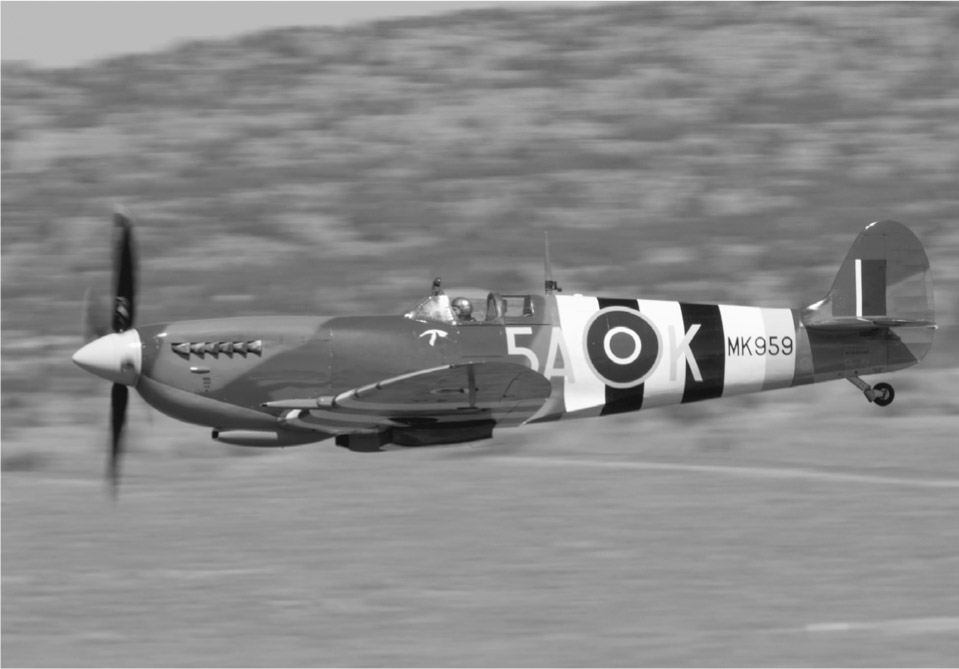
PHOTO BY ROGER CAIN